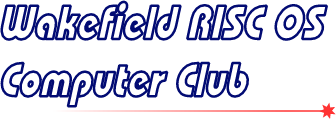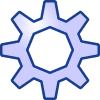Meeting: Photoshop and Digital Photography
Following his popular talk in September, DARC’s Barry Thompson returned to Yorkshire to tell us more about digital images and photography. This time he looked at the things that can be done to images in photo-editing packages: improving and correcting dynamic range and colour balance, adjusting faded or washed out pictures, and fixing sloping horizons and wonky perspectives. Although Barry used Photoshop, the techniques he showed us were equally applicable to other packages such as PhotoDesk. Finally, to close the evening, he demonstrated the use of software to stich multiple images together to form a panorama.
Report by Steve Fryatt
Following the success of his visit in September, November saw the return of Barry Thompson to talk about the manipulation of digital images. The subject followed on naturally from digital cameras and, judging by the size of the audience, proved to be as popular amongst the club’s members as the earlier topic.
The meeting was opened by Chris Hughes, who had a few announcements to make. One of the members present, Richard Ashbery, had brought a copy of the new RISC OS Now magazine along with him for people to look at, and he also said a few words encouraging people to consider writing articles for it.
With the formalities out of the way, the main presentation could begin. Over the course of the evening, Barry took us through a range of things that can be done to digital images using a piece of software like Adobe Photoshop. Although the demonstration was done using Photoshop CS2, many of the techniques would be applicable to other tools like Photoshop Elements, The GIMP, or Photodesk on RISC OS.
We started by looking at the various ways in which the dynamic range and colour balance of an image can be improved or corrected once it has been taken. This touched on a subject that Barry had looked at during his previous visit, and showed how easy it is – in the hands of an expert, at least – to remove unwanted tints and fix incorrect exposure.
Sometimes images can appear faded or washed out – this can be particularly true of scanned old prints, or pictures which have suffered from too much flash. There are a number of ways in which this type of problem can be reduced, and Barry demonstrated some of them. With the addition of the clone stamp and repair tools to smooth over folds and tears, it is often possible to make damaged old photographs appear as good as (if not better than) new again.
Photo manipulation isn’t all about removing the blemishes, however, and we soon moved on to look at the things that can be done to cure sloping horizons or incorrect perspective in images. Photoshop contains a number of tools to help with these tasks, making it easy to rotate or stretch a picture before cropping the edges to remove unwanted peripheral objects.
Taking a break from Photoshop, Barry showed how to use the curiously named PTGui for stitching together a number of images to form a panorama. Similar to John Pearson’s PhotoStitch on RISC OS, it can take a set of overlapping images and join them together so that they form one large seamless picture.
As someone who is not that familiar with tools like Photodesk or Photoshop, I found the evening extremely interesting and useful.







